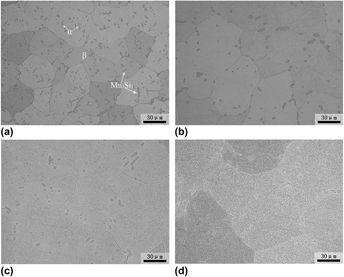Article contents
Effect of annealing treatment on the microstructures, mechanical, and wear properties of a manganese brass alloy
Published online by Cambridge University Press: 11 April 2016
Abstract

The effect of annealing treatment on the microstructures, mechanical, and wear properties of a CuZnAlMnSiNiCr brass alloy is investigated. The results indicate that nanosized Mn5Si3 particles are observed to precipitate from the β phase at temperatures above 750 °C. After annealing at 800 °C for 4 h, the formation of finely, coherent precipitates dispersed within the matrix results in the great improvement of strength, hardness and thus the high wear resistance, which can be proven by the decreased wear rates and friction coefficients. According to the examination of the wear topography, adhesive, abrasive, and oxidative wear are found to be the major wear forms during the dry sliding wear. After the precipitation-hardening treatment, the adhesion and abrasion decrease, and few spallings and cracks are observed on the worn surfaces. In addition, the wear behavior of the alloy is found to be strongly dependent on its strength and hardness.
Keywords
- Type
- Articles
- Information
- Copyright
- Copyright © Materials Research Society 2016
References
REFERENCES
- 8
- Cited by


